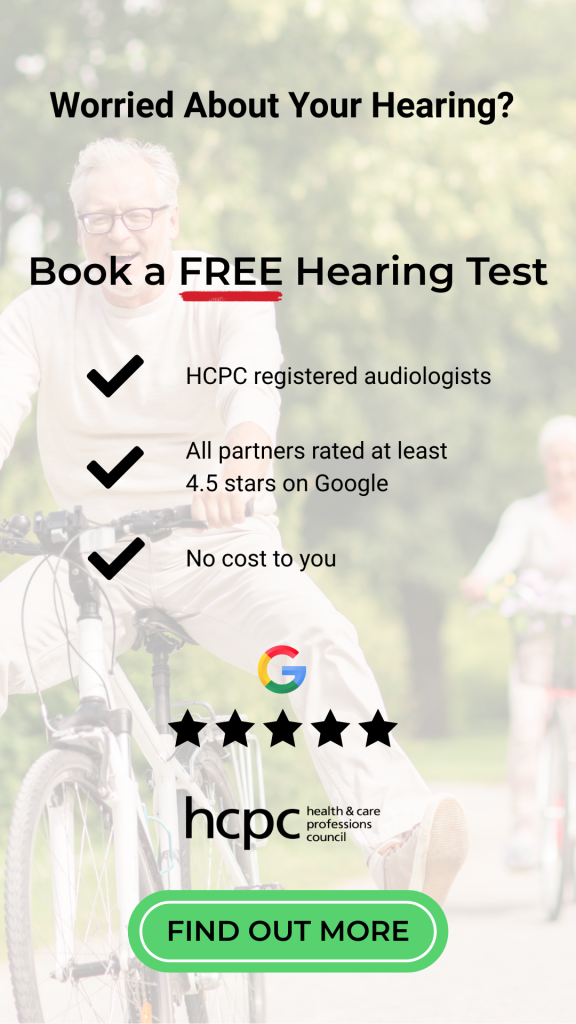Have you ever passed a hearing test but still found yourself asking people to repeat themselves or struggling to follow conversations in noisy environments? If so, you’re not alone—and you’re not imagining things. Many people experience hearing difficulties even after receiving a “normal” result on a basic hearing test. This can be frustrating, confusing, and even isolating, especially if your concerns are dismissed because your test results seem fine.
The truth is, standard hearing tests are just one piece of the puzzle when it comes to understanding how well we hear. While they’re excellent at identifying certain types of hearing loss, they don’t capture everything—especially when it comes to how the brain processes sound or how well we hear in real-life, noisy situations.
In this article, we’ll explore why you might still have hearing loss even if you passed a hearing test. From a look at how standard tests work to a deep dive into conditions like hidden hearing loss, you’ll gain a clearer picture of what might be happening and what steps you can take next.
Understanding Standard Hearing Tests
When you go in for a basic hearing test, you’re usually given what’s called a pure-tone audiometry test. In a quiet, soundproof room, you’re asked to wear headphones and press a button or raise your hand when you hear beeping sounds at various pitches and volumes. This test helps determine the softest sound you can hear at each frequency, known as your hearing threshold. The results are then plotted on an audiogram, which is used to diagnose traditional types of hearing loss.
While pure-tone audiometry is the gold standard for detecting hearing loss caused by damage to the inner ear or auditory nerve (like age-related or noise-induced hearing loss), it has some limitations. One of the biggest? It only measures your ability to detect sounds—not how well you understand them, especially in more complex, real-world situations like conversations in noisy environments.
This is important because hearing isn’t just about volume. It’s about clarity, timing, and your brain’s ability to process and interpret sounds accurately. You might hear the beep during your test just fine, but that doesn’t necessarily mean you’re catching every word your friend says in a crowded restaurant.
In fact, people with normal hearing thresholds on a standard audiogram can still experience significant hearing challenges. That’s where the concept of hidden hearing loss and other auditory processing issues come into play—problems that basic hearing tests are not designed to detect.
What Is Hidden Hearing Loss?
Hidden hearing loss is a relatively new and lesser-known condition that helps explain why some people struggle to hear despite having “normal” results on a basic hearing test. The term refers to hearing difficulties that aren’t detected by standard audiometry, because the damage lies not in the inner ear’s ability to detect sound, but in how the auditory system processes it—especially in noisy environments.
In most traditional hearing loss cases, damage occurs in the hair cells of the cochlea, which are responsible for converting sound waves into electrical signals the brain can interpret. Standard hearing tests are excellent at detecting this type of damage. However, hidden hearing loss involves damage to the synapses that connect those hair cells to the auditory nerve, often called cochlear synaptopathy. When these connections are impaired, the brain receives a degraded signal—even though the ear still hears the sound.
The result? You might hear that someone is speaking, but your brain struggles to decode what they’re saying, particularly when background noise is present. This can be especially frustrating in social situations, leading to feelings of withdrawal or embarrassment when you’re constantly missing parts of conversations.
Hidden hearing loss is often caused by noise exposure, even without noticeable immediate hearing loss. It may also result from aging or certain medications. And because it doesn’t affect your ability to detect pure tones in a quiet setting, it often goes undiagnosed—leaving many people confused about why they’re still struggling to hear.
Understanding this condition is key to validating your experience. If you suspect something’s not quite right with your hearing, even after passing a test, hidden hearing loss might be the missing piece of the puzzle.
Common Signs You Might Have Hearing Trouble Despite Passing a Test
Just because your hearing test results fall within the “normal” range doesn’t mean you’re not experiencing real challenges. Many people live with subtle but significant hearing difficulties that don’t show up on a standard audiogram. If you’re wondering whether your struggles might indicate hidden hearing loss or another undetected issue, here are some common signs to watch for.
1. Difficulty Hearing in Noisy Environments
This is one of the most frequently reported symptoms. You might hear individual sounds clearly in a quiet room but find it nearly impossible to follow a conversation in a restaurant, crowded gathering, or busy store. Your brain has to work much harder to separate speech from background noise, which can lead to listening fatigue and frustration.
2. Frequently Asking People to Repeat Themselves
If you find yourself saying “What?” or “Can you say that again?” more often than others around you, it could indicate a processing issue, even if you technically “hear” the words.
3. Misunderstanding Speech
This can happen when similar-sounding words get jumbled in your brain—especially when someone speaks quickly or has an accent. You might find that you misinterpret what someone says, leading to awkward or confusing exchanges.
4. Feeling Mentally Exhausted After Listening
Struggling to hear isn’t just an ear issue—it can be mentally taxing. People with hidden hearing loss often report feeling drained after social events because their brains have to work overtime to fill in the gaps.
5. Turning Up the Volume Higher Than Others Prefer
Whether it’s the TV, phone, or car radio, you may need to increase the volume more than those around you, even though your hearing test says you’re “normal.”
6. Trouble Locating Where Sounds Are Coming From
Your ability to localize sound depends on subtle timing and volume cues between your ears. Processing problems can disrupt this system, making it hard to tell where a sound originated.
If you relate to one or more of these symptoms, you’re not imagining things. These real-world listening challenges are strong indicators that something deeper than basic hearing loss might be occurring—something a standard test may not pick up.
Why Standard Tests Miss Certain Hearing Issues
Standard hearing tests, while incredibly useful, are not designed to capture every type of auditory difficulty. They focus mainly on detecting threshold hearing loss—how soft a sound needs to be before you can hear it. However, hearing in the real world is far more complex. This is where standard tests fall short.
One major limitation is that pure-tone audiometry doesn’t measure how well you understand speech, especially in environments with competing noise. In everyday life, we rarely listen in silence. Conversations happen in bustling kitchens, on busy streets, or during family gatherings. If your brain has trouble filtering out background noise or processing speech cues quickly, a standard test won’t reveal that.
Another overlooked issue is auditory processing disorder (APD). This condition affects the way the brain interprets sounds, not the ears themselves. People with APD often have completely normal hearing thresholds but still struggle to make sense of what they hear. APD can make it hard to follow conversations, especially when multiple people are speaking or when there’s a lot of background noise.
Then there’s the issue of cochlear synaptopathy, also known as hidden hearing loss. Damage to the nerve connections between hair cells in the inner ear and the auditory nerve doesn’t impact your ability to hear pure tones in silence but severely affects how well your brain decodes complex sounds. This kind of nerve damage doesn’t show up on an audiogram.
Additionally, basic tests don’t evaluate listening effort or cognitive load. You might be technically hearing sounds, but if it takes an unusual amount of mental energy to decode them, that’s a sign your auditory system isn’t functioning optimally—even if your test results say otherwise.
Finally, the test environment itself is part of the problem. Hearing tests are conducted in soundproof rooms, using high-quality headphones and calibrated equipment. This is a far cry from the chaotic and unpredictable environments where most real-life listening happens.
In short, while standard hearing tests are excellent for detecting traditional forms of hearing loss, they miss more subtle—and very real—hearing difficulties. That’s why it’s so important to trust your lived experience and not rely solely on test results when evaluating your hearing health.
Advanced Tests and What to Do Next
If you’ve passed a standard hearing test but still feel like you’re missing parts of conversations or struggling to hear in noisy settings, it’s important not to dismiss your concerns. There are more specialized tests and evaluations available that can uncover hidden or complex hearing issues.
One of the most helpful tools for identifying subtle hearing difficulties is the Speech-in-Noise (SIN) Test. This test assesses your ability to understand speech against background noise, mimicking real-world environments. If you score poorly on a SIN test despite having normal pure-tone thresholds, it may indicate hidden hearing loss or an auditory processing problem.
Another useful assessment is Auditory Processing Testing, which evaluates how well your brain interprets and makes sense of the sounds it receives. This is especially important for diagnosing conditions like Auditory Processing Disorder (APD). These tests often involve listening to distorted speech, competing words, or rapid sequences of sounds to see how well your brain can cope.
Otoacoustic Emissions (OAE) and Auditory Brainstem Response (ABR) testing are also sometimes used to explore inner ear and neural function beyond what an audiogram can show. These tests are non-invasive and provide insight into how well your ears and brainstem respond to sound stimuli.
If you’re experiencing symptoms that concern you, the best next step is to schedule a comprehensive evaluation with an audiologist. Unlike quick screenings or basic hearing checks, a full diagnostic workup includes a range of tests tailored to your specific symptoms. Be sure to describe your challenges clearly—such as struggling in noisy places or feeling mentally fatigued after conversations—so your provider knows to look beyond standard testing.
In some cases, even if no physical hearing damage is detected, audiologists may recommend strategies or devices to help. These could include hearing aids with advanced noise reduction features, assistive listening devices, or auditory training programs designed to improve brain processing of sound.
Most importantly, trust your instincts. If something doesn’t feel right with your hearing, keep asking questions and seeking answers. You deserve to hear clearly—and comfortably—in all the environments that matter to you.
Conclusion
Hearing is about much more than just detecting sounds—it’s about understanding, processing, and making sense of the world around you. Passing a standard hearing test may provide some reassurance, but it doesn’t always tell the whole story. If you’re still struggling to follow conversations, especially in noisy environments, or find yourself constantly asking people to repeat themselves, you’re not alone—and you’re not imagining things.
Hidden hearing loss and other auditory processing issues often go undetected by basic hearing exams. These conditions can significantly impact your quality of life, even when your audiogram looks “normal.” Recognizing the limitations of standard tests is the first step toward finding real solutions.
Fortunately, advanced evaluations and personalized interventions are available. Whether it’s a more detailed hearing assessment, specialized hearing technology, or strategies to improve listening skills, there are ways to address these hidden challenges.
If you’re experiencing hearing difficulties, don’t ignore them—and don’t settle for a “normal” test result that doesn’t match your reality. Your hearing health is too important. Trust your experience, advocate for a deeper evaluation, and seek help from professionals who understand that hearing is as much about clarity as it is about volume.
FAQ
Can I still have hearing problems even if my test results are normal?
Yes. Many people experience hearing difficulties despite having normal results on a standard hearing test. Conditions like hidden hearing loss and auditory processing disorder can impact your ability to understand speech, especially in noisy environments, even when your audiogram shows no signs of traditional hearing loss.
What is hidden hearing loss, and how is it different from regular hearing loss?
Hidden hearing loss refers to damage to the auditory nerve connections in the inner ear that affects your brain’s ability to process sound, particularly speech in noisy settings. Unlike regular hearing loss, which shows up on a hearing test, hidden hearing loss often goes undetected because your ability to hear pure tones remains intact.
What should I do if I think I have hearing loss but passed my test?
If you suspect hearing issues, seek a comprehensive evaluation from an audiologist. Ask about advanced testing like speech-in-noise tests or auditory processing assessments. Be specific about your symptoms and listening challenges to ensure they perform more than just the standard audiogram.
Can hearing aids help if I have hidden hearing loss?
In some cases, yes. Modern hearing aids come with features like directional microphones and noise-reduction algorithms that may improve clarity in complex listening environments. However, treatment depends on the nature of your hearing difficulty, and some people may benefit more from auditory training or assistive listening devices.
Is hidden hearing loss permanent?
Hidden hearing loss may be permanent, especially if it’s due to noise exposure or age-related nerve damage. However, early intervention and hearing strategies can significantly improve communication and reduce listening fatigue, even if the underlying damage can’t be reversed.
“This article is for informational purposes only and is not a substitute for professional medical advice, diagnosis, or treatment. If you are concerned about your hearing or ear health, please consult a qualified healthcare provider.”





